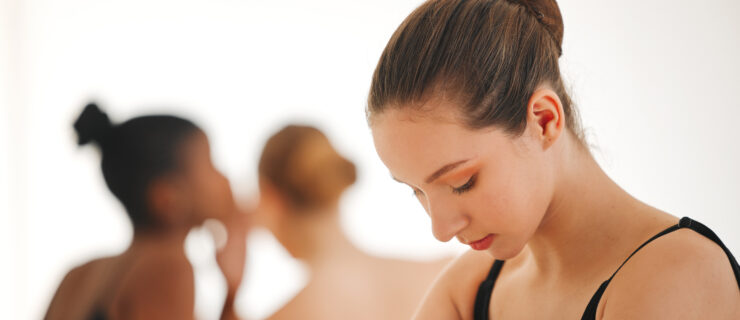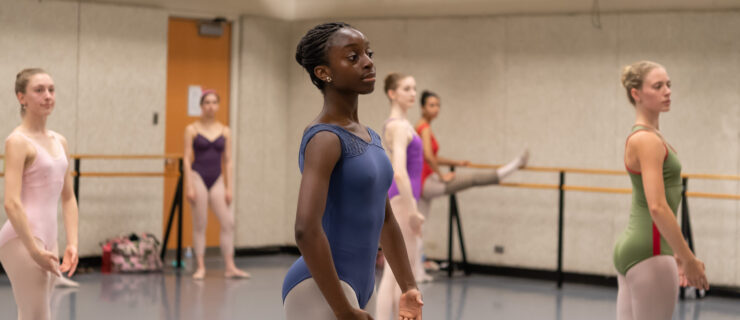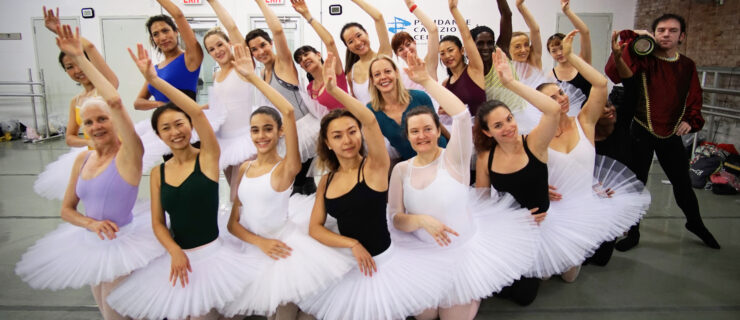7 Tips for Filming Summer Program Audition Videos
It’s that time of year again—audition season. And once again, in-person auditions are being canceled, and dancers are scrambling to get video auditions filmed and submitted. The tips below will help you tackle that project efficiently, and hopefully save you from the more maddening aspects of the process.
1. Get organized.
Check the websites of all the places you are interested in applying for, and compile the information in a way that makes sense to you. Create a spreadsheet of the combinations you’ll need for each school, or put everything into a master check-list, divided by sections: barre, center, jumps, pointework. Then you can film each combination separately as raw material and edit the footage together as needed for each school.
2. Budget enough time.
Plan on each section taking about half an hour. Some dancers don’t need this much time, others need more. Know yourself: If you are likely to dance better with two shorter filming sessions, schedule your studio time accordingly.
3. Figure out logistics
Pay attention to the exact requests of each school, including whether they want both sides or just one at barre (this may vary from one combination to the next, even for the same school), and if they specify filming angles. Most prefer barre exercises to be filmed from a diagonal, about halfway between front and side views. But some will ask that a specific combination be filmed in profile, or with the dancer en face to the camera. Make notes about these details in your list or spreadsheet.
Even if you only need to show one side at barre, it’s not a bad idea to film both sides. Then you have two takes of each exercise to choose from, and you can consider switching it up: Show adagio on the right, for instance, and grands battements on the left. As a bonus, you’ll be evenly warmed up as you move into the trickier center section.
4. Get help, if possible.
You can make up the combinations yourself and get a friend or a parent to record you, but it’s best to have a teacher’s eye on the proceedings. They’ll know how to make combinations that show you to your greatest advantage.
5. Don’t be afraid to speak up!
If the teacher who’s helping you creates a combination that doesn’t feel comfortable, politely ask them to change it. Unlike in a regular class or private lesson, the objective here is not to help you become a better dancer, but to show off the dancer you already are. If you feel confident with attitude turns but not arabesque turns, make sure your instructor knows that.
A teacher in the room can also help you navigate your perfectionism; they can tell you, after a combination, if the take is good enough, or if it’s worth trying again. They are also better qualified to let you know mid-take if a wobble or mistake is worth stopping for.
6. Unless your teacher stops you, keep dancing.
If you hop out of a pirouette instead of nailing the landing, keep going. Especially if this happens on the second side! You can still try again, but that last take may end up being the best one, wobble notwithstanding. Remember that the more times you film a combination, the more tired you will get. And the more tired you are, the harder it will be to nail that landing.
If you do an incorrect step, keep dancing. The judges watching the video don’t know what the combination is, so they won’t know it’s a mistake. If your slip-up happens on the first side, try to remember to make the same “mistake” on the second side. But even if you forget—or if the error occurs on the second side—you should still finish the combination if you can. The judges might be looking for consistency in your turns, but not in the sequence of steps. They probably won’t even notice that what was a jeté to the right, for example, became an assemblé on the left.
7. Remember that no one expects you to be perfect.
If they did, they wouldn’t want to train you, and that is of course what summer intensives are for. Dancers are perfectionists, and the temptation to hit the little trash-can icon on your phone can add a lot of pressure to the video audition process. And it can backfire if you get too tired to dance well before you’ve managed to get everything in the can, as it were.
Try to keep in mind that, to external eyes, you are the same dancer on your worst day as on your best. Chances are today is neither—and it’s the dancer you are today that schools want to see. So do the best you can, choose the best takes from the ones you have, then send in your video. Good luck!





